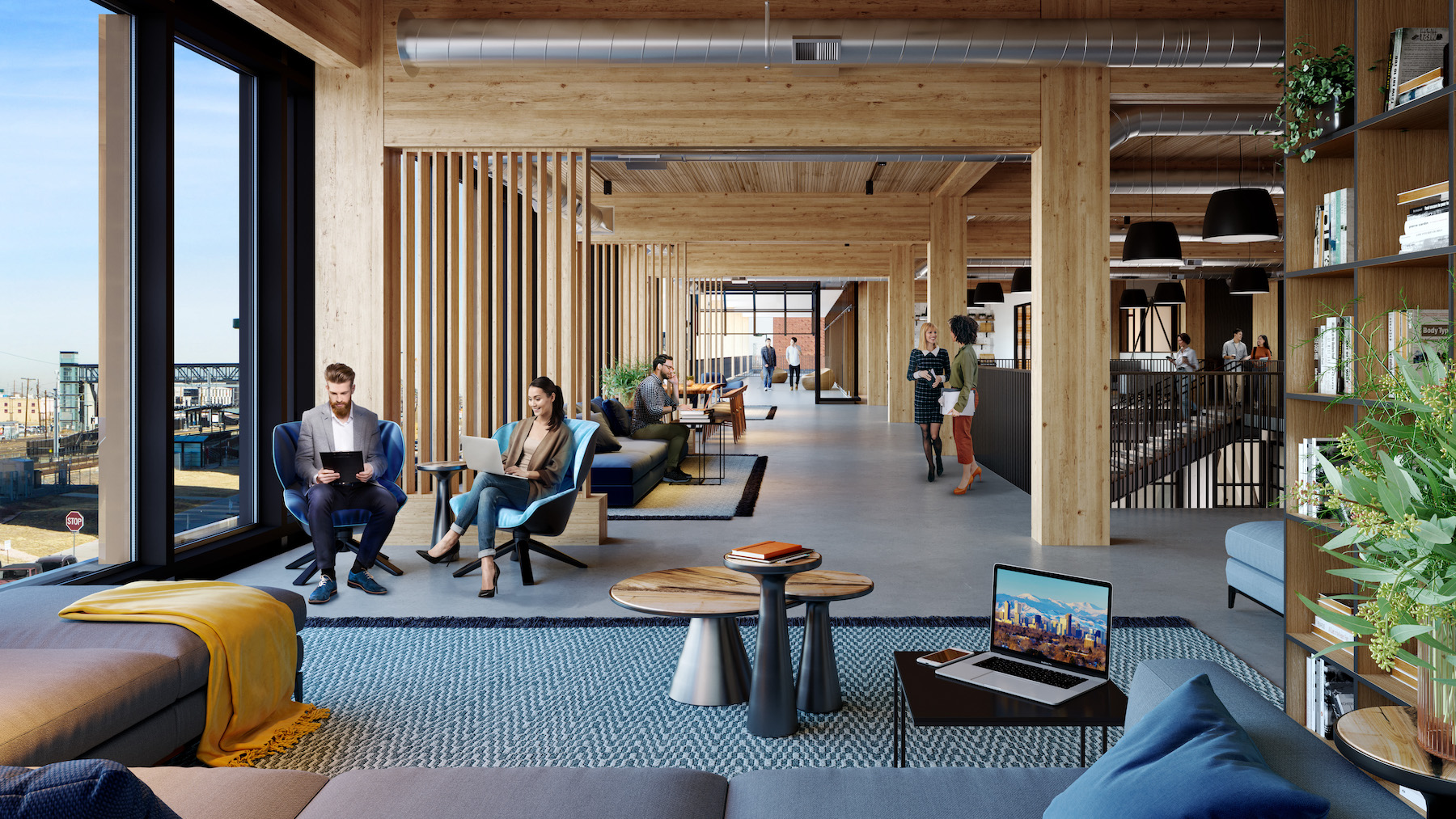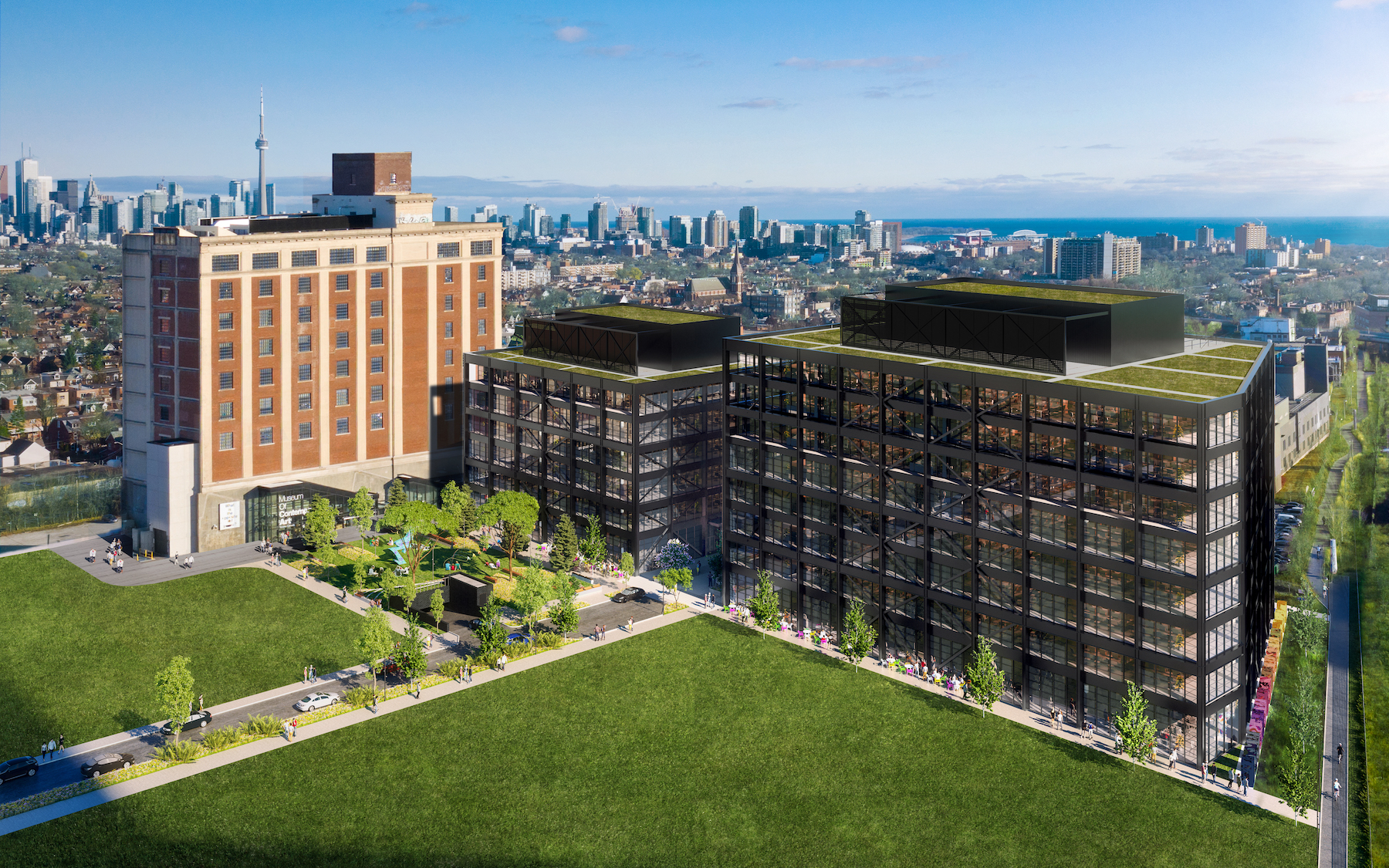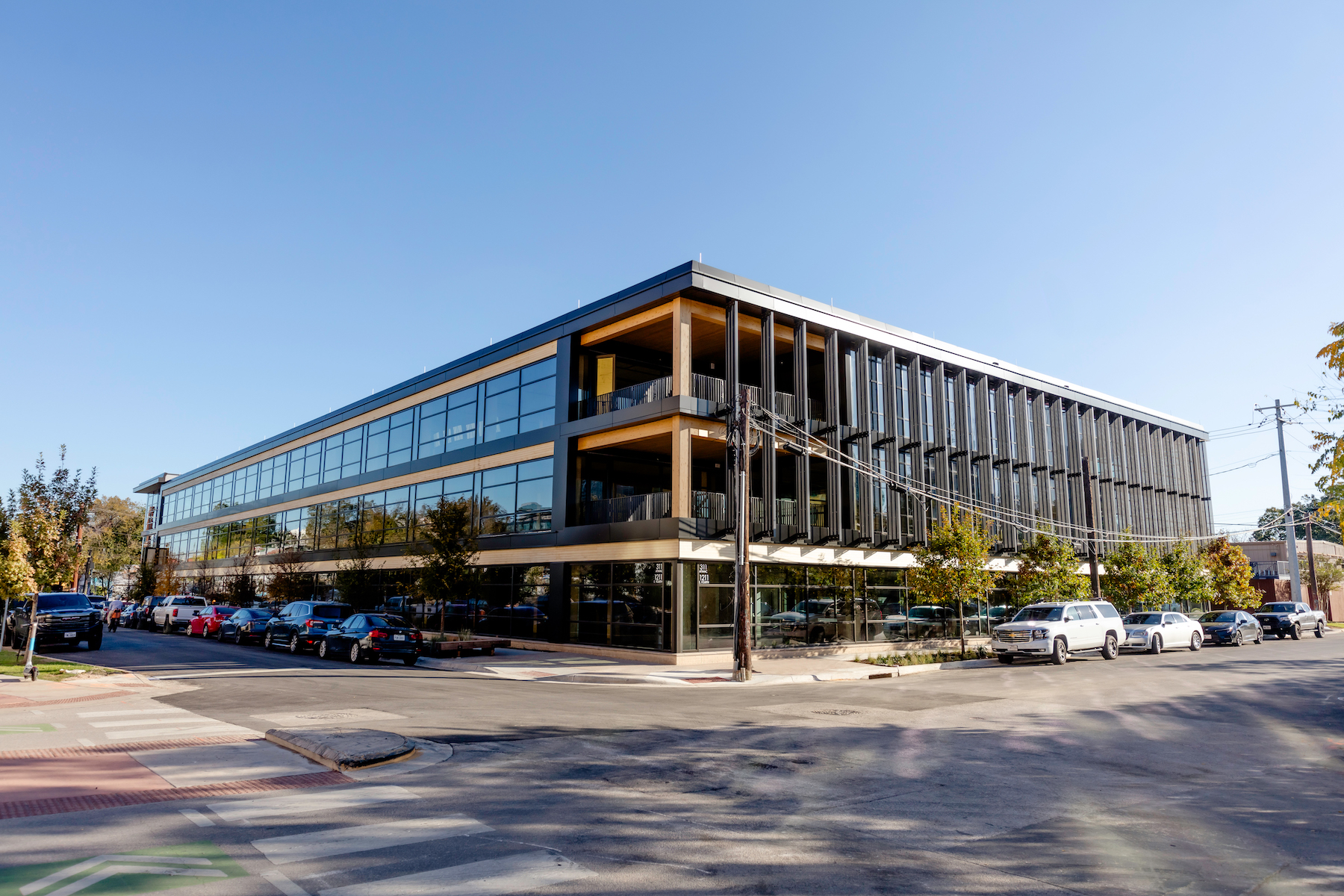On January 29, the owner/developer Hines stated that it had completed construction on a three-story, 92,000-sf office and residential building in East Austin, Texas. The building, known as T3 ATX Eastside, features mass timber as its primary construction material. It is one of 26 buildings in various stages of design, construction, or completion that subscribe to Hines’ T3 (shorthand for Timber, Transit, and Technology) concept, which the developer introduced in 2016 with the completion of a 221,552-sf, seven story office building in the North Loop neighborhood of downtown Minneapolis.
Hines currently has other T3s completed, or nearly so, in Atlanta, Nashville, Denver, and two buildings in Toronto. The East Austin building, with 15 corporate residential suites, is the first T3 to include housing. Mike Horvath, Vice President of Conceptual Construction in Hines’ Houston office, explains that the decision to include residential in future T3s will boil down to whether the building can absorb the cost premium associated with using mass timber via its rents.
Hines’ embrace of mass timber, though, is an exception. Mass timber projects might get lots of press, but they represent a sliver of total construction activity. As of December 2023, there was a total of 2,035 mass timber projects (multifamily, commercial, and institutional) in progress or built in the U.S., according to Woodworks|The Wood Building Council’s latest estimates. Last year’s bankruptcy filing by Structurlam, a leading mass timber manufacturer, after Walmart canceled a lucrative supply contract for its 350-acre Home Office campus in Arkansas, accentuated how volatile this niche can be. (Structurlam was subsequently sold to Mercer Mass Timber, North America’s largest mass timber manufacturer, for just over $8 million. According to its parent company Mercer International, Mercer Mass Timber entered 2024 with a nearly $100 million order book.)
On a positive note, building codes are becoming more receptive to using mass timber for taller buildings: the 2021 International Building Code allows mass timber to be used for Type IV-A buildings with residential and business occupancies up to 18 stories. Taller mass timber buildings in Milwaukee, Wis., and in Sweden have achieved three-hour fire ratings, and the proposed 2024 IBC includes language that removes encapsulation requirements for Type IV-B buildings up to 12 stories, an important change for a material whose purpose is as much aesthetic as structural.
Will a building’s rent offset mass timber’s premium?
“We’re bullish about mass timber, and can’t see the market moving in the opposite direction,” says Steve Cavanaugh, AIA, LEED AP, Principal and Design Lead for DLR Group in Chicago, which has been the Architect of Record on all of Hines’ T3 projects.

Cavanaugh says his firm now includes mass timber in conversations about every one of its projects. Whether DLR Group favors mass timber, he elaborates, depends on several considerations that include the scale and use of the building, code viability, and zoning. Cost is also a factor. “We spend a lot of time optimizing the structure and its financial viability and value,” says Cavanaugh.
Horvath says that while virtually all of Hines’ project teams want to use mass timber, it sometimes doesn’t pencil out cost-wise. He notes, too, that some metros, like Houston, are still building under older IBC codes that restrict the use of mass timber. (When BD+C brought up the resilient fire rating achieved by Ascent, the 25-story mass timber high rise in Milwaukee, Horvath lamented that most municipalities “aren’t reading the papers about that.”)
He adds, parenthetically, that the insurance industry hasn’t bought in completely on mass timber, either, especially in Europe.
Mass timber construction conveys a building’s authenticity
Perhaps the biggest hurdle for broader use of mass timber, says Horvath, is “knowledge and understanding. I don’t think most users have a true appreciation for the material.” That could be changing, however, as codes become more lenient, and mass timber projects attract more developers and AEC firms. Horvath points specifically to two projects—the 251,000-sf T3 Bayside in Toronto, designed by the Danish firm 3XN Architects; and the 235,000-sf, six-story T3 RiNo in Denver, designed by Pickard Chilton Architects—as being noteworthy examples of the form’s aesthetic potential.

Cavanaugh also touts mass timber’s “authenticity,” conveyed through its exposed framing and sustainable attributes.
He and Horvath believe that mass timber will gain market share as a building material, especially now that codes are catching up to market demand. And Cavanaugh thinks that over the next few years developers will arrive at mass timber’s “sweet spot” in terms of building height.
Horvath anticipates more “hybrid” buildings with combinations of mass timber, steel, and concrete. He also expects mass timber to be more prevalent in multifamily projects and in industrial construction for building types like data centers.
Related Stories
Engineers | Sep 15, 2023
NIST investigation of Champlain Towers South collapse indicates no sinkhole
Investigators from the National Institute of Standards and Technology (NIST) say they have found no evidence of underground voids on the site of the Champlain Towers South collapse, according to a new NIST report. The team of investigators have studied the site’s subsurface conditions to determine if sinkholes or excessive settling of the pile foundations might have caused the collapse.
Codes and Standards | Sep 13, 2023
New rule mandates annual parapet inspections for New York City buildings
In November 2021, New York City enacted Local Law 126 of 2021, which is well-known in the building industry for establishing new requirements for periodic parking garage inspections. At the same time, the legislation added a section to the NYC Administrative Code mandating periodic observation of building parapets. To allow owners time to prepare, the City set the start date for the new parapet observations for January 1, 2024.
Office Buildings | Aug 31, 2023
About 11% of U.S. office buildings could be suitable for green office-to-residential conversions
A National Bureau of Economic Research working paper from researchers at New York University and Columbia Business School indicates that about 11% of U.S. office buildings may be suitable for conversion to green multifamily properties.
Vertical Transportation | Aug 17, 2023
Latest version of elevator safety code has more than 100 changes
A new version of ASME A17.1/CSA B44, a safety code for elevators, escalators, and related equipment developed by the American Society of Mechanical Engineers, will be released next month.
Codes and Standards | Aug 7, 2023
Cambridge, Mass., requires net-zero emissions for some large buildings by 2035
The City of Cambridge, Mass., recently mandated that all non-residential buildings—including existing structures—larger than 100,000 sf meet a net-zero emissions requirement by 2035.
Sustainability | Jul 27, 2023
USGBC warns against building energy code preemptions, rollbacks
In a recent editorial, the USGBC cited a growing number of U.S. state legislators who are “aiming to roll back building energy code standards and/or preempt local governments from advancing energy-efficient building codes.”
Codes and Standards | Jul 17, 2023
Outdated federal rainfall analysis impacting infrastructure projects, flood insurance
Severe rainstorms, sometimes described as “atmospheric rivers” or “torrential thunderstorms,” are making the concept of a “1-in-100-year flood event” obsolete, according to a report from First Street Foundation, an organization focused on weather risk research.
Codes | Jul 10, 2023
Water Demand Calculator outperforms traditional plumbing codes for energy, carbon, and water savings
Using IAPMO’s Water Demand Calculator tool can result in energy, carbon, and water savings as compared to using traditional plumbing specification methods in plumbing codes, according to a study by Arup.
Affordable Housing | Jun 27, 2023
Racial bias concerns prompt lawmakers to ask HUD to ban biometric surveillance, including facial recognition
Two members of the U.S. House of Representative have asked the Department of Housing and Urban Development to end the use of biometric technology, including facial recognition, for surveillance purposes in public housing.
Urban Planning | Jun 15, 2023
Arizona limits housing projects in Phoenix area over groundwater supply concerns
Arizona will no longer grant certifications for new residential developments in Phoenix, it’s largest city, due to concerns over groundwater supply. The announcement indicates that the Phoenix area, currently the nation’s fastest-growing region in terms of population growth, will not be able to sustain its rapid growth because of limited freshwater resources.

















